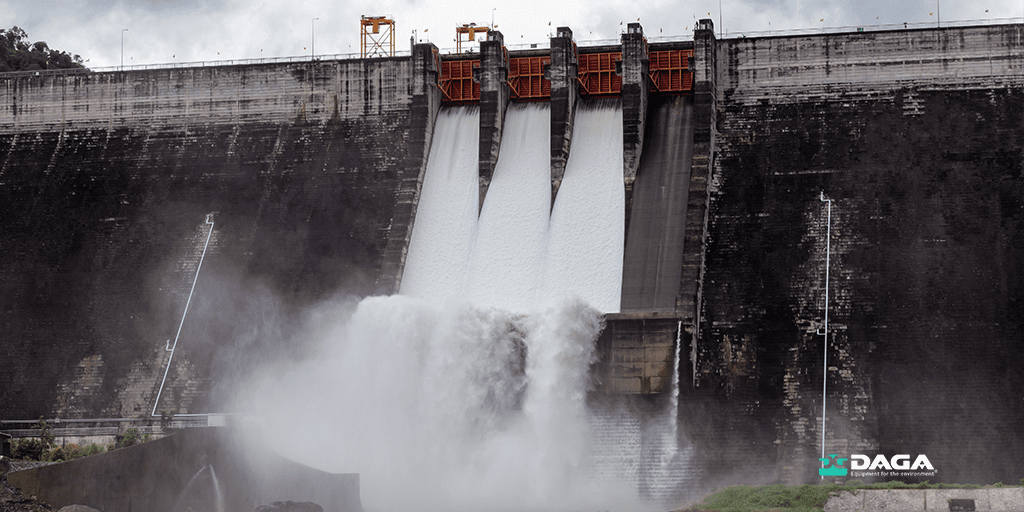
The United Nations institute calls for collective and international cooperation to stop the deterioration of dams and reservoirs around the world, of which 1,064 in Spain have already exceeded their life expectancy of between 50 and 100 years, representing a great danger of overflowing and infrastructure failure.
The report "Ageing of hydraulic infrastructures: an emerging global risk" by the Institute for Water, Environment and Health already warns of the serious economic and social consequences that the deterioration of these dams , which provide vital functions such as flood control, water supply and hydropower, among many others, can cause.
Let's take a closer look at the consequences of not repairing these facilities and the most appropriate measures to take:
Some countries have already considered the possibility of decommissioning existing water impoundments to build new infrastructure on the dams to guarantee public safety and preserve the river ecosystem of the affected areas. In regions such as Europe and the United States, it is estimated that the economic and social cost and impact of dam removal may be lower than that of a repair, with a second viable option consisting of closing the facilities if reconstruction costs are too high for low-income countries.
However, the massive ageing of dams and reservoirs makes the removal process complex and time-consuming, with an estimated years and decades of work, making immediate global action by the governments of each region the best plan of action to ensure the involvement of experts and regulatory reviews of such reforms.
Following the information provided by Pereira, only well-built, designed and maintained dams can cope with the problems of river flow and erosion, so the best measure is to carry out periodic inspections and timely maintenance to extend the useful life of these constructions, where dismantling is the best option if their deterioration is very significant, to avoid risks and minimize economic and human costs.
For more information, please visit our blog.
The report "Ageing of hydraulic infrastructures: an emerging global risk" by the Institute for Water, Environment and Health already warns of the serious economic and social consequences that the deterioration of these dams , which provide vital functions such as flood control, water supply and hydropower, among many others, can cause.
Let's take a closer look at the consequences of not repairing these facilities and the most appropriate measures to take:
Uncontrolled ageing of dams
The report by the United Nations University (UNU-INWEH) offers quantified data even more alarming than the one mentioned at the Spanish level. According to this report, most of the 58,700 large dams and reservoirs around the world will have exceeded their useful life in 2050, thereby reaching 100 years of longevity.Some countries have already considered the possibility of decommissioning existing water impoundments to build new infrastructure on the dams to guarantee public safety and preserve the river ecosystem of the affected areas. In regions such as Europe and the United States, it is estimated that the economic and social cost and impact of dam removal may be lower than that of a repair, with a second viable option consisting of closing the facilities if reconstruction costs are too high for low-income countries.
However, the massive ageing of dams and reservoirs makes the removal process complex and time-consuming, with an estimated years and decades of work, making immediate global action by the governments of each region the best plan of action to ensure the involvement of experts and regulatory reviews of such reforms.
Environmental impact on the reservoir countdown
These water reservoirs, with a volume between 7,000 and 8,300 cubic kilometers, have an additional aggravating overflow factor: climate change. Duminda Pereira, a researcher at UNU-INWEH and lead author of the report, says that the change in river flow, as well as the proliferation of extreme rainfall, reduces the efficiency of water storage in reservoirs, with sedimentation hampering storage through the accumulation of solid materials carried by river currents.Following the information provided by Pereira, only well-built, designed and maintained dams can cope with the problems of river flow and erosion, so the best measure is to carry out periodic inspections and timely maintenance to extend the useful life of these constructions, where dismantling is the best option if their deterioration is very significant, to avoid risks and minimize economic and human costs.
DAGA and its water management policy
With the mission of optimizing the capacity of wastewater treatment plants and plants in irrigation or industry on an international scale, DAGA was born with the aim of offering customized solutions on the correct use of water and technical advice on construction and water management processes. Our quality services, backed up by 30 years of experience, serve to respond to any environmental sustainability problem that may arise around the world.For more information, please visit our blog.


